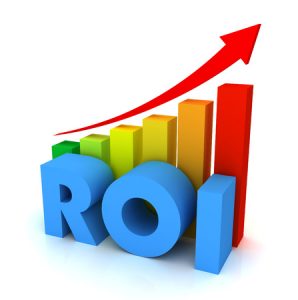
What’s considered the gold standard of marketing measurement? Analyzing the impact a marketing campaign has on the bottom line. When dollars and resources are tight, companies want to make sure they are getting a solid return on their investment. The ROI on blogs and other types of content marketing is among the highest in communications projects. Why? Three reasons: the cost is minimal; content has long-term viability; and the effects on traffic and SEO compound as more content is produced. According to Demand Metric, content marketing costs 62% less than outbound marketing and generates three times as many leads. That’s a statistic worth considering. Use these ROI tactics to boost your blog content strategy’s return.
ROI Tactics for Blogs
- Focus on achieving multiple goals. It goes without saying that blogs need to fulfill a purpose and engage your target markets. However, content that serves multiple purposes is even more valuable. In other words, make sure content increases brand awareness, generates qualified leads and demonstrates thought leadership.
- Stay frequent and relevant. Due to the consumable nature of blogs, a high frequency of contact is necessary. While some companies post daily, blogging weekly or bi-weekly is sufficient. The key here is once you establish a schedule, stick to it. Consistency of posting is important. However, frequency without relevancy renders the content’s value moot. To be relevant, explore industry trends and news, produce how-to content, advice and tips and share challenges and solutions.
- Use data and industry statistics. There is a vast array of data collection and analysis tools available today. This makes it easier for content developers to cite numbers that support and reinforce the key points mentioned in your blogs.

- Address prospects’ challenges and pain points. Readers are far more likely to engage in content that answers their questions or solves their problems. When you do this successfully, readers will tend to reach out to you when they have a need.
- Distribute across many channels. A blog is only as powerful as its outreach. Share and distribute across multiple marketing channels. Social media, email and newsletters are useful channels for expanding your reach. Network with other thought leaders to distribute content mutually. In other words, share and make your content shareable.
- Revisit and revise old content. While remaining relevant and newsworthy is essential to staying on your audience’s radar, sustainable content can solidify your blog’s web presence. Referred to as “evergreen topics,” these are subjects that remain useful and relevant beyond current trends. It’s important to pepper your blog with evergreen content that showcases your expertise. In that way, readers can return to blogs far beyond the post date.
- Engage with multimedia and interactive content. 91% of buyers are looking for more visual and interactive content when making purchase decisions. Spruce up your blogs with visual, multimedia and interactive content to keep audiences captivated and wanting to learn more. Graphics, videos and slide presentations create interest beyond basic text content.
- Optimize posts for SEO. One of the main reasons to maintain a blog is to attract potential customers. Focus on keywords that your target market may be searching for. Incorporate those keywords into the URL, blog title, body copy and alt text of images. Also look for web tools plug-ins to maximize your blog’s SEO effectiveness.
- Include a call to action. Having readers is great. But if the readers don’t take the next step toward becoming customers, your ROI will suffer. Give readers an obvious call to action to provide their contact information so your sales team can follow up. This may be through the download of a resource such as a white paper or case study.
- Measure your blog’s impact. A blog’s success, especially for B2B companies, cannot be measured by a simple click-to-conversion figure. It takes time to nurture the leads before prospects become customers. Beginning bloggers should focus on engagement and reach metrics. Track traffic, shares and likes. Progress to evaluating subscriptions and call-to-action effectiveness. Experiment with different topics and techniques to see which deliver the most impact.
Blog ROI Strategy

If you’re going to invest in a blog, develop a strategy to maximize your return. Follow the ROI tactics above to generate the highest return on investment possible. Remember, like any other marketing initiative, success requires a commitment and allocation of resources including time, money and personnel. When creating posts, keep marketing and organizational goals in mind to be sure your blog delivers the best ROI possible.

